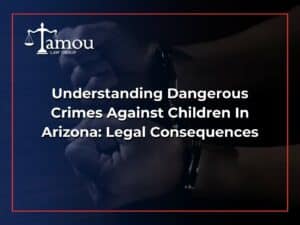Restorative Justice: An Alternative Approach to Criminal Punishment
The criminal justice system has long relied on punitive measures to address crime, focusing primarily on punishment and retribution. However, an alternative approach known as restorative justice is gaining recognition for its potential to repair harm, promote healing, and prevent recidivism. This blog will explore the principles, its implementation under Arizona law, and the benefits it offers to victims, offenders, and the community.
Understanding Restorative Justice
Restorative justice is a philosophy and practice that emphasizes repairing the harm caused by criminal behavior. It involves all stakeholders, including victims, offenders, and the community, in a collaborative process to address the consequences of the crime and find pathways to healing. Unlike traditional punitive justice, restorative justice focuses on accountability, making amends, and fostering understanding.
Key Principles of Restorative Justice:
- Inclusion of All Parties: Restorative justice involves victims, offenders, and community members in the resolution process.
- Repairing Harm: The primary goal is to repair the harm caused by the crime, rather than simply punishing the offender.
- Accountability: Offenders are encouraged to take responsibility for their actions and understand the impact of their behavior.
- Reintegration: Efforts are made to reintegrate offenders into society as responsible and contributing members.
Restorative Justice in Practice
Restorative justice can take various forms, including victim-offender mediation, restorative circles, and community conferencing. These practices creates a safe space for dialogue, victims can express their feelings and needs, and offenders can understand the impact of their actions and make amends.
Victim-Offender Mediation: In this process, a mediator facilitates a structured conversation between the victim and the offender. The goal is to allow the victim to convey the emotional and practical impact of the crime and for the offender to acknowledge their responsibility and agree on ways to make restitution.
Restorative Circles: Restorative circles involve a wider community, including victims, offenders, and other affected parties. Participants sit in a circle to discuss the crime, its impact, and collective ways to address the harm and prevent future offenses.
Community Conferencing: Community conferencing brings together the victim, offender, their supporters, and community members to discuss the offense and develop a mutually agreed-upon plan for restitution and reintegration.
Restorative Justice Under Arizona Law
Arizona has embraced elements of restorative justice within its legal framework, recognizing its potential to complement the traditional criminal justice system. Several statutes and programs reflect this commitment.
Arizona Statutes:
- A.R.S. § 8-341: This statute allows for diversion programs for juvenile offenders, emphasizing rehabilitation over punishment.
- A.R.S. § 13-4426: This law ensures victims have the right to confer with the prosecution and be heard during proceedings, aligning with restorative justice principles of victim inclusion.
- A.R.S. § 13-4401: This statute outlines victims’ rights, including the right to participate in restorative processes and receive restitution.
Benefits of Restorative Justice
Restorative justice offers numerous benefits compared to the traditional punitive approach, making it an attractive option for communities looking to enhance their justice systems.
Victims:
- Empowerment: Victims have a voice in the justice process, helping them regain a sense of control and closure.
- Healing: The opportunity to express their feelings and receive acknowledgment from the offender can facilitate emotional healing.
Offenders:
- Accountability: Offenders are held accountable in a constructive way that encourages personal growth and behavioral change.
- Rehabilitation: By understanding the impact of their actions and making amends, offenders are more likely to reintegrate successfully into society.
The Community:
- Safety: By addressing the root causes of criminal behavior and promoting rehabilitation, restorative justice can reduce recidivism and enhance community safety.
- Cohesion: Restorative practices can strengthen community bonds by fostering mutual respect and understanding.
Conclusion
Restorative justice represents a transformative approach to addressing crime, focusing on healing and rehabilitation rather than mere punishment. By involving all stakeholders and prioritizing the repair of harm, restorative justice has the potential to create safer, more cohesive communities.
At Tamou Law Group PLLC, we are dedicated to exploring and implementing innovative approaches to justice. If you have any questions or need legal assistance, please contact us at 623-321-4699. Together, we can work towards a more just and restorative future.

Tamou Law Group
Scottsdale Office
9375 E Shea Blvd #100
Scottsdale, AZ 85260
Phone: 623-321-4699


![The Top 3 Probation Violation Lawyers in Phoenix, AZ [2025]](https://tamoulawgroup.com/wp-content/uploads/2025/11/phoenix-probation-violation-lawyer-300x300.png)
![How to Beat a DUI Charge in Phoenix, AZ [2025]](https://tamoulawgroup.com/wp-content/uploads/2025/08/best-phoenix-dui-lawyers-300x300.png)